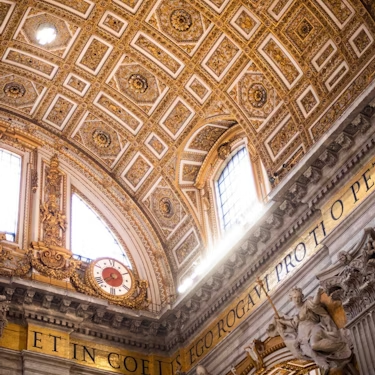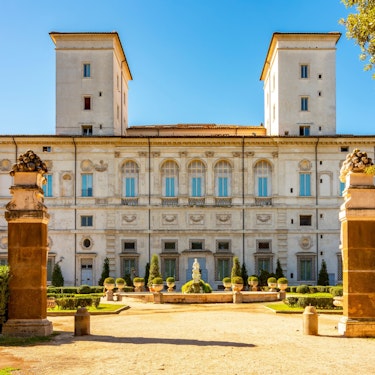More about: Rome Opera House Tickets and Tours
The vibrant red velvet, the famous golden dome with frescoes by Annibale Brugnoli and a majestic Murano chandelier with 27,000 drops of glass, are the essential elements for an opera evening full of passion and feeling. Do not be fooled by its sober facade, the Opera House houses a dream space for you to enjoy in style the best operas in the world.
Keep reading this article to find out how to buy your tickets, how to get to the theater, what to see in the surroundings ... I tell you all the details to enjoy this essential plan that stands out among everything to see and do in Rome.
How much do tickets to the Opera Theatre cost?

Forget about having to save up for a whole year to enjoy the best opera performances. The Teatro dell'Opera offers affordable tickets for all budgets, finding seats from 22€ to 160€.
The price difference between one ticket and another is due to the seat chosen (the last rows of the gallery are the cheapest and the first rows of the stalls the most expensive), and the number of performances of the work.
The same play on the day of its premiere can cost between 4€ and 35€ more than in the following performances. But don't worry about the sound, as the theater is built in a horseshoe shape to act as a resonance chamber, so no matter which seat you choose you will be able to hear the opera in all its splendor.
The price of tickets for the ballet varies in the same way as for the opera performances, but prices are somewhat cheaper, from 20€ to 100€ for the best seats at the premiere of the performance.
Enjoy a 25% discount:
To bring opera and ballet closer to all audiences, the theater offers a 25% reduction on admission to young people under 25, students under 30 and those over 65 years of age.
Don't forget to bring a valid ID to benefit from this discount. This reduction cannot be applied to premieres or balcony or gallery seating.
Take advantage of the Opera Card:
If you are an opera lover and plan to attend on a regular basis, the Opera Card can be your great ally.
With a price of 10€ for adults and 5€ for young people under 25, you can enjoy 10% discounts on your tickets to the Opera House and the Terma de Caracalla (not including premieres and seats in the balconies and gallery), 30% discounts on tickets to the Roman Philharmonic Academy, among others.
Check the website of the Rome Opera for the other benefits of the Opera Card. You can purchase your card at the theater's box office.
Subscribe to the Opera House:
Have you fallen in love with opera, ballets, and all their performances? Don't worry, because the Teatro de la Ópera has different subscriptions available so that you don't miss any of its works.
Choose the option that best suits your preferences, the complete opera, weekends or if you prefer ballet performances.
How to get tickets for the Opera Theater:
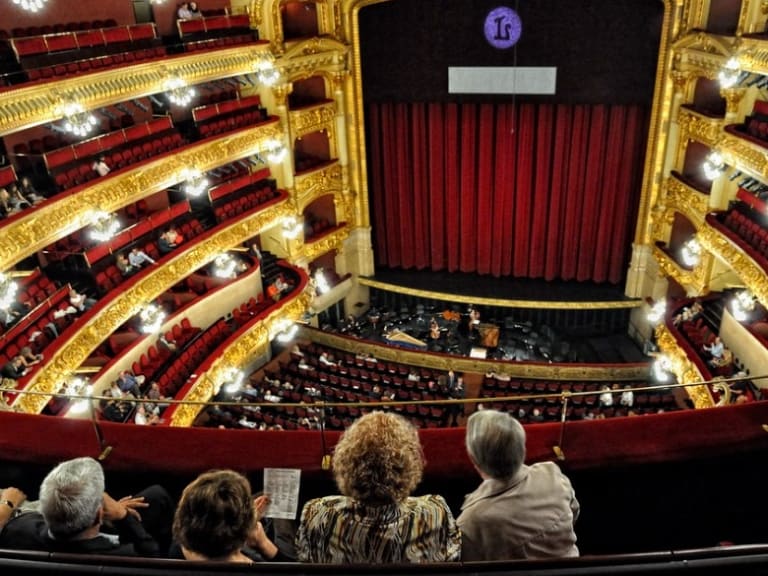
If the opera is among your plans during your visit to Rome, do not leave tickets for the last minute, because even if you can buy them at the box office, they usually sell out quickly.
Below I show you the different options to buy your tickets without any problem online, at the theater box office or book them remotely.
Buy your tickets at the box office
If you are in Rome and you prefer to have your tickets in hand, go to Piazza Beniamino Gigli, 1, to buy your tickets. The ticket office is open Monday through Saturday from 10 am to 6 pm and Sunday from 9 am to 1 pm. Please note that the ticket office will be closed on public holidays.
You can pay for your tickets:
- In cash.
- With a non-transferable bank draft to the Rome Opera House Foundation.
- By check to the Rome Opera House Foundation (you must have your ID card with you at all times).
- By credit and debit card: American Express, Visa, Maestro, Mastercard, BankAmericard, CartaSi, Diners.
If the tickets are for same-day performances, come to the Opera House one hour before or up to 15 minutes after the start of the performance.
Buy your tickets through the web
If you are one of those who prefer to buy tickets in advance online and save queues or surprises, you can go to their website and see all the available performances, seats, dates, etc.
Buy or reserve your tickets by phone:
You can also purchase your tickets by phone through the number: 06 48160255. Remember that this phone number is an Italian line and commissions may be charged when calling abroad, and you must also enter the country code.
Tickets purchased by phone must be picked up at the box office within 48 hours prior to the performance.
How to get to the Opera House

Located in Piazza Beniamino Gigli 7, in the old Esquilino district, the Opera House is easily accessible by public transport.
If you have the Roma Pass card you will have free access to all public transport (subways and buses) in Rome while your card is active.
Remember that transfers to airports and regional trains are not included. You can also purchase the Omnia Card to benefit from free public transportation.
To the Opera House by metro
One of the fastest ways to get around Rome is by metro. To get to the Rome Opera House I recommend you to use line A to the stop: Repubblica Teatro Dell'Opera which is located next to the theater.
You can buy tickets at the metro stations and also at the tobacconists and kiosks marked with a blue sign with a T on it. For more information, do not hesitate to consult this guide on how to use the metro in Rome.
All the options to get there by bus
Depending on where you are in the city you can take different bus lines, here I show you all the available routes.
Of course, if you plan to go by bus to the theater I recommend you to go with enough time, as the waiting time between buses can reach up to 20 minutes or more.
- From Via Nazionale: H, 40, 60, 60, 64, 70, 71, 170, 116T
- From Via Depretis: 70, 71
- From Via Cavour: 16, 75, 84, 150 (holiday), 360, 590, 649, 714
- From the Train Station (Stazione Termini): 16, 38, 75, 86, 90, 90, 217, 310, 360, 649, 714
Arriving by cab from any point of the city
The closest cab stand to the Rome Opera House is 6645, undoubtedly the most convenient way to travel.
The perfect parking if you come by car
If you prefer to travel in your own vehicle, don't worry about parking, as the theater offers a 50% discount at the Garage Mediterraneo parking garage. Head to 12 Massimo D'Azeglio Street and leave your car under complete security and surveillance.
Visit to the Historical and Audiovisual Archive of the Opera Theatre
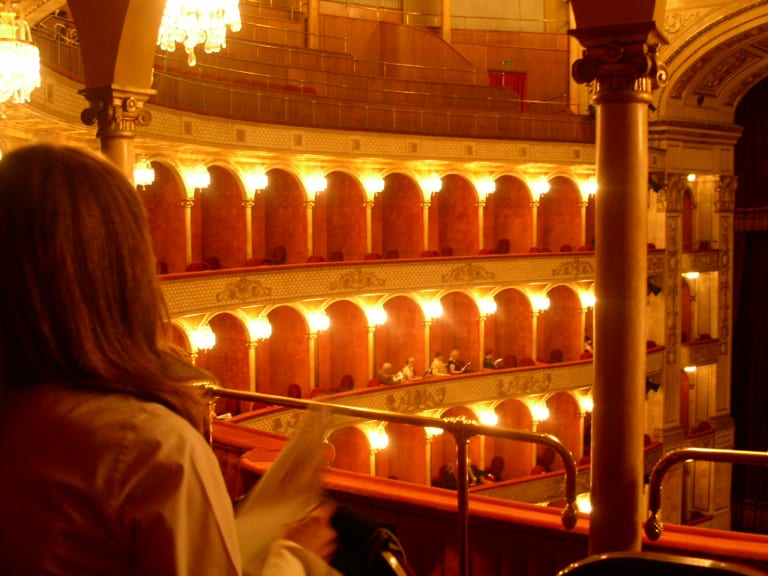
More than 11,000 sketches of scenery, photographs of the shows, 84,000 pieces of costumes, audios, videos and much more await you in this magnificent catalog that brings together all the historical documentation of the Opera Theatre of Rome. If you are passionate about opera you can not miss this encyclopedic collection, more than 100 years of history of artistic memory in an archive open publicly for you to enjoy the events that took place since the opening day of the theater in 1880.
Tips and recommendations for visiting the Opera Theater

To enjoy a night of opera in style, I bring you all the necessary recommendations and information so that nothing catches you by surprise:
- Remember that it is forbidden to record or photograph the performances, so all photographic or video equipment will be stored in the theater's closet. The use of cell phones in the auditorium is also prohibited. Focus on enjoying this unique experience and put your 5 senses in the play, it is sure to be an evening you will not forget.
- For most performances you can dress casually, but for opening or premiere nights prepare your best clothes because it will be a movie event.
- Keep an eye on the time and don't be late, as entry to the stalls and numbered seats in the gallery or balconies is prohibited once the performance has begun.
- The Rome Opera House has a magnificent café that features a detailed menu by Alba Esteve Ruiz, known as the Marzipan Chef of Rome. In this restaurant you can enjoy an exquisite dinner or snack with hot and cold dishes to pick up during the break of the performance or before the event. Remember, however, that all food and drink must remain in the assigned areas and not be brought with you to the show. If you prefer to have lunch or dinner outside the theater I recommend you take a look at this restaurant recommendation to choose from a wide variety of delicious dishes.
Opening hours of the Rome Opera House:
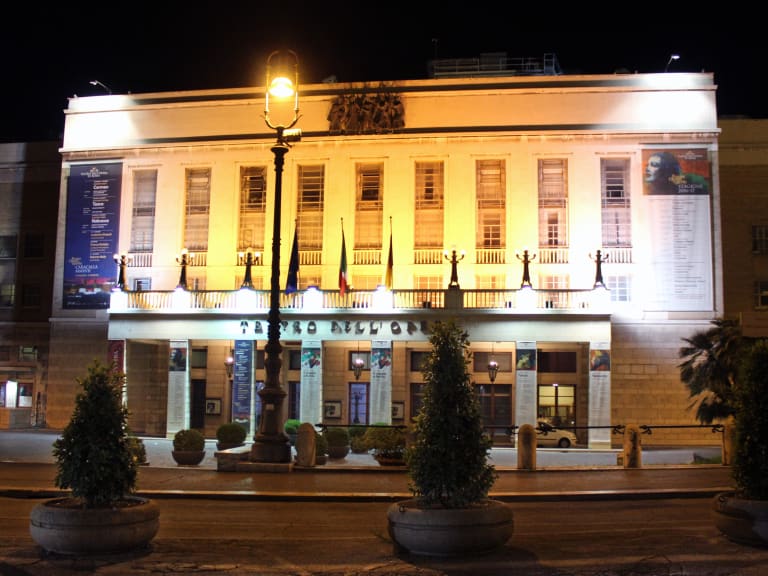
Opera never sleeps in the eternal city. The Rome Opera House's performance schedule runs year-round, but to add to the beauty and delve even deeper into Roman life, if you travel to Rome during the summer months, you'll find that performances are held at the Baths of Caracalla.
Visiting the Baths of Caracalla, one of the most majestic thermal centers of antiquity, is almost a must if you travel to Rome.
Despite being built between 212 and 216, we can still enjoy its large brick walls and huge vaults, making its surroundings an idyllic place to enjoy the opera on summer nights.
The Baths of Caracalla have been the scene of great operas since 1930, and nowadays they also host different festivals and dance and music performances. Tickets can be purchased on the same page of the Teatro dell'Opera di Roma
Opera or ballet schedules depend on the different performances available.
What to do in the area around the Opera House:

On your visit to the Opera House be sure to tour the Esquilino district for a full day out on your visit to Rome.
This district was home to personalities such as Cicero, Horace and Maecenas and despite not being one of the most popular places in the city of Rome, it holds precious relics such as the Ecstasy of St. Teresa and the Cornaro Chapel in the Church of Santa Maria della Vittoria or the finger of St. Thomas in the Church of Santa Croce in Gerusalemme.
One of the main attractions of this part of the city is the Church of Santa Maria Maggiore, one of the seven main basilicas of Rome. Santa Maria Maggiore is one of the four Major Basilicas of Rome and the only one that maintains its original Paleochristian floor plan and mosaics from the 5th century.
You can also stroll through Piazza della Repubblica and see the fountains of Nayades and the Basilica of Santa Maria degli Angeli e dei Martiri.
In the heart of the Esquilino is Piazza Vittorio Emanuele. It was built in 1870 and here you can stroll through the gardens of Nicola Calipari, see the remains of a Roman fountain of the third century AD, see the Porta Magica built by Massimiliano Palombara (the only door that still survives of the five that were built in Villa Palombara).
Rome is full of majestic monuments and buildings. Visiting the best squares of the city is something you should not forget to include in your itinerary.
Finally I recommend

Rome is home to one of the new 7 wonders of the world, the Colosseum, making it one of the main tourist destinations for any traveler who wants to get into the wonderful Italian cultural life, and therefore, finding the perfect time in terms of capacity is a bit tricky.
As a personal recommendation, try to book your opera tickets as far in advance as possible. Although you can buy your tickets for same-day performances at the theater's box office, it is a risky option.
Likewise, if you prefer to wait for the summer months and visit the opera at the Baths of Caracalla, it is best to book them in advance, as despite being months with high temperatures, there are many tourists who come to enjoy the summer festivals of dance, music and opera.
Remember that with the Roma Pass or Omnia Card you can visit the city with free tickets or great discounts. Take a look at their different modalities to see which one best suits your needs.
If you have run out of tickets to visit the Rome Opera House, don't worry, as the capital of Italy brings opera to every corner of its city.
The Palazzo Santa Chiara or the Basilica of St. Paul Intramuros are other places where you can go to enjoy music in all its splendor. If you prefer an open-air concert, head to Rome's Terrazza Borromini, near Piazza Navona to enjoy Puccini, Rossini and Verdi while sipping an aperitif.
You also have the opportunity to book tickets for an opera concert at the Waldensian Church, located in the heart of Rome, an idyllic place to enjoy a recital of the best tenors and sopranos of the Opera de Camera.













